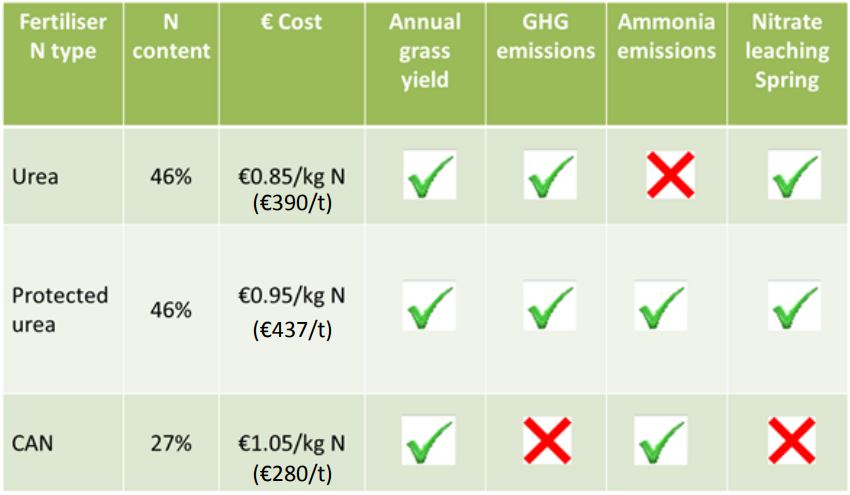If we were to switch half our calcium ammonia nitrate (CAN) fertiliser over to protected urea, it would be the equivalent to the emissions of 100,000 dairy cows – or all the cows in Co. Kerry – according to Teagasc’s William Burchill.
William was speaking at the Teagasc National Dairy Conference held this week, in Killarney, Co. Kerry, and in Mullingar, Co. Westmeath.
He said: “We have two choices, one of them is the type of fertiliser we use and the other is the amount of fertiliser we use.
“If we were to changed the type of fertiliser we use, by switching half the CAN fertiliser we use over to protected urea, nationally, we would reduce our emissions by 15%.”
This might seem small, but William stressed that this decrease would be the equivalent to reducing the emissions from 100,000 dairy cows or all the dairy cows in Co. Kerry.
He stated: “We are standing here today in Co. Kerry and when we look at the amount of dairy cows in Co. Kerry, it has just over this.
So by switching half of CAN to protected urea it will literally wipe out the emissions of every single dairy cow in this county.
Likewise, if we moved all of the straight CAN we use to protected urea, he noted: “We would then reduce our emissions from fertiliser by a massive 30%, across the whole country – with this equating to the emissions of many more cows.”
Also, more strikingly, he noted that if we were to reduce our nitrogen (N) fertiliser use nationally by 25%, it still wouldn’t give us the same impact as changing over from straight CAN to protected urea.
We are taking about a 25% reduction in emissions if we reduce the total N we spread compared to a 30% reduction by switching all CAN used to protected urea – that is not actually reducing the amount of N we are spreading, it is just changing the type.
“So we have a choice,” he added.
Concluding his remarks, he said: “Protected urea is the only type of N that is ticking all the boxes when it comes to the environmental side of things.
“It is the only fertiliser that is good in terms of greenhouse gas (GHG) emissions and ammonia emissions. It will be the one that will help us reach both targets.”


